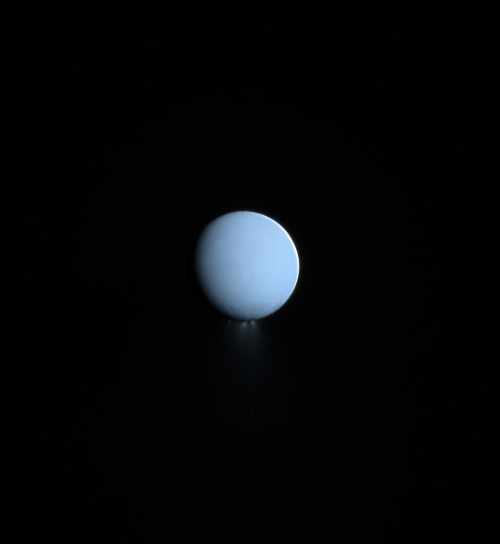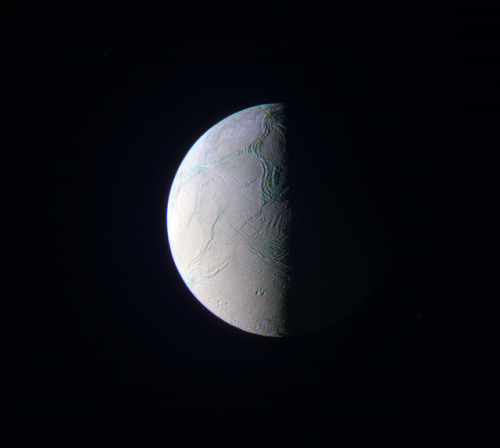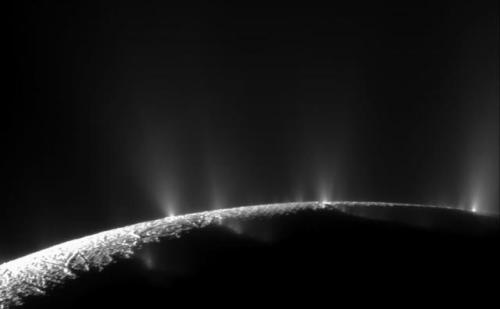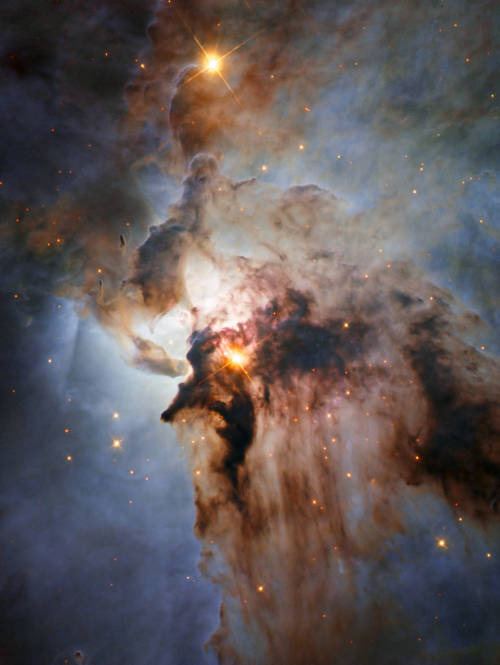5 Questions You Were Too Embarrassed To Ask About The Expanding Universe









5 Questions You Were Too Embarrassed To Ask About The Expanding Universe
“5.) Are there galaxies moving away faster than the speed of light, and isn’t that forbidden? From our point of view, the space in between us and any distant point is expanding. The farther away something is, the faster it appears to recede from us. Even if the expansion rate were tiny, an object far enough away would eventually cross that threshold of any finite speed, since an expansion rate (a speed-per-distance) multiplied by a great enough distance will give you a speed as fast as you want. But this is okay in General Relativity! The law that nothing can travel faster than the speed of light only applies to an object’s motion through space, not to the expansion of space itself. In reality, the galaxies themselves only move around at speeds that are hundreds or thousands of km/s, much lower than the 300,000 km/s speed limit set by the speed of light. It’s the expansion of the Universe that causes this recession and the redshift, not a true galactic motion.”
The idea that the spatial fabric of the Universe itself is expanding, and that’s what’s behind the observed relationship between redshift and distance has long been controversial, and also long-misunderstood. After all, if more distant objects appear to recede more quickly, couldn’t there be a different explanation, like an explosion that flung many things outward? As it turns out, this isn’t a mere difference in interpretation, there are observations we can make that tell us the answer! The Universe is not expanding ‘into’ anything, despite what your intuition might tell you. The Hubble ‘constant’ isn’t actually a constant, but is rather decreasing as time goes on. The Universe looks like it’s going to expand forever, but even that scientific conclusion is subject to revision depending on what data shows in the future. And although 97% of the galaxies in the Universe are already unreachable, it isn’t a violation of relativity or a faster-than-light phenomenon that’s to blame.
Come learn the answers to five questions about the expanding Universe that many are too embarrassed to ask!
More Posts from Xyhor-astronomy and Others









Enceladus
Enceladus is one of the major inner moons of Saturn along with Dione, Tethys, and Mimas. It orbits Saturn at a distance of 148,000 miles (238,000 km), falling between the orbits of Mimas and Tethys. It is tidally locked with Saturn, keeping the same face toward the planet. It completes one orbit every 32.9 hours within the densest part of Saturn’s E Ring, the outermost of its major rings, and is its main source.
Enceladus is, like many moons in the extensive systems of the giant planets, trapped in an orbital resonance. Its resonance with Dione excites its orbital eccentricity, which is damped by tidal forces, tidally heating its interior, and possibly driving the geological activity.
Enceladus is Saturn’s sixth largest moon, only 157 miles (252 km) in mean radius, but it’s one of the most scientifically compelling bodies in our solar system. Hydrothermal vents spew water vapor and ice particles from an underground ocean beneath the icy crust of Enceladus. This plume of material includes organic compounds, volatile gases, carbon dioxide, carbon monoxide, salts and silica.
With its global ocean, unique chemistry and internal heat, Enceladus has become a promising lead in our search for worlds where life could exist.

In 2005, Cassini’s multiple instruments discovered that this icy outpost is gushing water vapor geysers out to a distance of three times the radius of Enceladus. The icy water particles are roughly one ten-thousandth of an inch, or about the width of a human hair. The particles and gas escape the surface at jet speed at approximately 800 miles per hour (400 meters per second). The eruptions appear to be continuous, refreshing the surface and generating an enormous halo of fine ice dust around Enceladus, which supplies material to one of Saturn’s rings, the E-ring.
Several gases, including water vapor, carbon dioxide, methane, perhaps a little ammonia and either carbon monoxide or nitrogen gas make up the gaseous envelope of the plume.
Read more at: solarsystem.nasa.gov
Image credit: NASA/JPL/Cassini & Kevin Gill



(Causus maculatus) - Common names include forest rhombic night adder, West African night adder and spotted night adder.

Stormy Seas in Sagittarius
This new NASA/ESA Hubble Space Telescope image shows the center of the Lagoon Nebula, an object with a deceptively tranquil name, in the constellation of Sagittarius. The region is filled with intense winds from hot stars, churning funnels of gas, and energetic star formation, all embedded within an intricate haze of gas and pitch-dark dust.
Image Credit: NASA/JPL/ESA/J. Trauger
Curiosity Rover: Five Years on Mars
The evening of August 5, 2012…five years ago…our Mars Curiosity rover landed on the Red Planet.

Arriving at Mars at 10:32 p.m. PDT (morning of Aug 6 EDT), this rover would prove to be the most technologically advanced rover ever built.

Curiosity used a series of complicated landing maneuvers never before attempted.

The specialized landing sequence, which employed a giant parachute, a jet-controlled descent vehicle and a daring “sky crane” maneuver similar to rappelling was devised because testing and landing techniques used during previous rover missions could not safely accommodate the much larger and heavier rover.
Curiosity’s mission: To determine whether the Red Planet ever was, or is, habitable to microbial life.

The car-size rover is equipped with 17 cameras, a robotic arm, specialized instruments and an on-board laboratory.

Let’s explore Curiosity’s top 5 discoveries since she landed on Mars five years ago…
1. Gale Crater had conditions suitable for life about 3.5 billion years ago

In 2013, Curiosity’s analysis of a rock sample showed that ancient Mars could have supported living microbes. Scientists identified sulfur, nitrogen, hydrogen, oxygen, phosphorus and carbon – some of the key chemical ingredients for life – in the powder Curiosity drilled out of a sedimentary rock near an ancient stream bed in Gale Crater.

Later, in 2014, Curiosity discovered that these conditions lasted for millions of years, perhaps much longer. This interpretation of Curiosity’s findings in Gale Crater suggests ancient Mars maintained a climate that could have produced long-lasting lakes at many locations on the Red Planet.
2. Organic molecules detected at several locations

In 2014, our Curiosity rover drilled into the Martian surface and detected different organic chemicals in the rock powder. This was the first definitive detection of organics in surface materials of Mars. These Martian organics could either have formed on Mars or been delivered to Mars by meteorites.

Curiosity’s findings from analyzing samples of atmosphere and rock powder do not reveal whether Mars has ever harbored living microbes, but the findings do shed light on a chemically active modern Mars and on favorable conditions for life on ancient Mars.
3. Present and active methane in Mars’ atmosphere

Also in 2014, our Curiosity rover measured a tenfold spike in methane, an organic chemical, in the atmosphere around the planet. This temporary increase in methane tells us there must be some relatively localized source.

Researchers used Curiosity’s onboard Sample Analysis at Mars (SAM) laboratory a dozen times in a 20-month period to sniff methane in the atmosphere. During two of those months, in late 2013 and early 2014, four measurements averaged seven parts per billion.
4. Radiation could pose health risks for humans

Measurements taken by our Curiosity rover since launch have provided us with the information needed to design systems to protect human explorers from radiation exposure on deep-space expeditions in the future. Curiosity’s Radiation Assessment Detector (RAD) was the first instrument to measure the radiation environment during a Mars cruise mission from inside a spacecraft that is similar to potential human exploration spacecraft.

The findings indicate radiation exposure for human explorers could exceed our career limit for astronauts if current propulsion systems are used. These measurements are being used to better understand how radiation travels through deep space and how it is affected and changed by the spacecraft structure itself. This, along with research on the International Space Station are helping us develop countermeasures to the impacts of radiation on the human body.
5. A thicker atmosphere and more water in Mars past

In 2015, Curiosity discovered evidence that has led scientists to conclude that ancient Mars was once a warmer, wetter place than it is today.
To produce this more temperate climate, several researchers have suggested that the planet was once shrouded in a much thicker carbon dioxide atmosphere. You may be asking…Where did all the carbon go?

The solar wind stripped away much of Mars’ ancient atmosphere and is still removing tons of it every day. That said, 3.8 billion years ago, Mars might have had a moderately dense atmosphere, with a surface pressure equal to or less than that found on Earth.
Our Curiosity rover continues to explore the Red Planet today. On average, the rover travels about 30 meters per hour and is currently on the lower slope of Mount Sharp.

Get regular updates on the Curiosity mission by following @MarsCuriosity on Twitter.
Make sure to follow us on Tumblr for your regular dose of space: http://nasa.tumblr.com

Image of Titan taken by the Cassini spacecraft
NASA/JPL-Caltech/SSI/Kevin M. Gill

Enceladus, moon of Saturn, observed by the Voyager 2 space probe on August 26, 1981, from a distance of approximately 109,000 kilometers.
(Planetary Society)
Oldest recorded solar eclipse helps date the Egyptian pharaohs

UNIVERSITY OF CAMBRIDGE—Researchers have pinpointed the date of what could be the oldest solar eclipse yet recorded. The event, which occurred on 30 October 1207 BC, is mentioned in the Bible, and could have consequences for the chronology of the ancient world.
Using a combination of the biblical text and an ancient Egyptian text, the researchers were then able to refine the dates of the Egyptian pharaohs, in particular the dates of the reign of Ramesses the Great. The results are published in the Royal Astronomical Society journal Astronomy & Geophysics.
The biblical text in question comes from the Old Testament book of Joshua and has puzzled biblical scholars for centuries. It records that after Joshua led the people of Israel into Canaan - a region of the ancient Near East that covered modern-day Israel and Palestine - he prayed: “Sun, stand still at Gibeon, and Moon, in the Valley of Aijalon. And the Sun stood still, and the Moon stopped, until the nation took vengeance on their enemies.” Read more.
Spacewalk Recap Told in GIFs
Friday, Oct. 20, NASA astronauts Randy Bresnik and Joe Acaba ventured outside the International Space Station for a 6 hour and 49 minute spacewalk. Just like you make improvements to your home on Earth, astronauts living in space periodically go outside the space station to make updates on their orbiting home.
During this spacewalk, they did a lot! Here’s a recap of their day told in GIFs…
All spacewalks begin inside the space station. Astronauts Paolo Nespoli and Mark Vande Hei helped each spacewalker put on their suit, known as an Extravehicular Mobility Unit (EMU).

They then enter an airlock and regulate the pressure so that they can enter the vacuum of space safely. If they did not regulate the pressure safely, the astronauts could experience something referred to as “the bends” – similar to scuba divers.
Once the two astronauts exited the airlock and were outside the space station, they went to their respective work stations.

Bresnik replaced a failed fuse on the end of the Dextre robotic arm extension, which helps capture visiting vehicles.

During that time, Acaba set up a portable foot restraint to help him get in the right position to install a new camera.

While he was getting set up, he realized that there was unexpected wearing on one of his safety tethers. Astronauts have multiple safety mechanisms for spacewalking, including a “jet pack” on their spacesuit. That way, in the unlikely instance they become untethered from the station, the are able to propel back to safety.

Bresnik was a great teammate and brought Acaba a spare safety tether to use.

Once Acaba secured himself in the foot restraint that was attached to the end of the station’s robotic arm, he was maneuvered into place to install a new HD camera. Who was moving the arm? Astronauts inside the station were carefully moving it into place!
And, ta da! Below you can see one of the first views from the new enhanced HD camera…(sorry, not a GIF).

After Acaba installed the new HD camera, he repaired the camera system on the end of the robotic arm’s hand. This ensures that the hand can see the vehicles that it’s capturing.

Bresnik, completed all of his planned tasks and moved on to a few “get ahead” tasks. He first started removing extra thermal insulation straps around some spare pumps. This will allow easier access to these spare parts if and when they’re needed in the future.

He then worked to install a new handle on the outside of space station. That’s a space drill in the above GIF.

After Acaba finished working on the robotic arm’s camera, he began greasing bearings on the new latching end effector (the arm’s “hand”), which was just installed on Oct. 5.

The duo completed all planned spacewalk tasks, cleaned up their work stations and headed back to the station’s airlock.

Once safely inside the airlock and pressure was restored to the proper levels, the duo was greeted by the crew onboard.

They took images of their spacesuits to document any possible tears, rips or stains, and took them off.

Coverage ended at 2:36 p.m. EDT after 6 hours and 49 minutes. We hope the pair was able to grab some dinner and take a break!
You can watch the entire spacewalk HERE, or follow @Space_Station on Twitter and Instagram for regular updates on the orbiting laboratory.
Make sure to follow us on Tumblr for your regular dose of space: http://nasa.tumblr.com.
If we ever want a long-distance relationship with aliens, they have to be able to find us.
-
 nyxxzy liked this · 5 years ago
nyxxzy liked this · 5 years ago -
 itskikirise liked this · 5 years ago
itskikirise liked this · 5 years ago -
 whats-up-in-space liked this · 5 years ago
whats-up-in-space liked this · 5 years ago -
 guccigoober77-blog liked this · 6 years ago
guccigoober77-blog liked this · 6 years ago -
 goldwatchesandleatherjackets liked this · 6 years ago
goldwatchesandleatherjackets liked this · 6 years ago -
 leahcim521 liked this · 6 years ago
leahcim521 liked this · 6 years ago -
 bunbunchan liked this · 6 years ago
bunbunchan liked this · 6 years ago -
 cara-linea reblogged this · 6 years ago
cara-linea reblogged this · 6 years ago -
 coughiccup liked this · 6 years ago
coughiccup liked this · 6 years ago -
 lotus-consumer reblogged this · 6 years ago
lotus-consumer reblogged this · 6 years ago -
 lotus-consumer liked this · 6 years ago
lotus-consumer liked this · 6 years ago -
 neuroscientificmurphy0908 reblogged this · 7 years ago
neuroscientificmurphy0908 reblogged this · 7 years ago -
 bettyvain reblogged this · 7 years ago
bettyvain reblogged this · 7 years ago -
 sukianemone reblogged this · 7 years ago
sukianemone reblogged this · 7 years ago -
 sunli078 reblogged this · 7 years ago
sunli078 reblogged this · 7 years ago -
 archaeana reblogged this · 7 years ago
archaeana reblogged this · 7 years ago -
 awray21 liked this · 7 years ago
awray21 liked this · 7 years ago -
 lissetmatu-blog liked this · 7 years ago
lissetmatu-blog liked this · 7 years ago -
 malgobe liked this · 7 years ago
malgobe liked this · 7 years ago -
 sunli078 liked this · 7 years ago
sunli078 liked this · 7 years ago -
 dahanatv3 reblogged this · 7 years ago
dahanatv3 reblogged this · 7 years ago -
 dahanatv3 liked this · 7 years ago
dahanatv3 liked this · 7 years ago -
 goldkirk liked this · 7 years ago
goldkirk liked this · 7 years ago -
 moonstar-magic liked this · 7 years ago
moonstar-magic liked this · 7 years ago -
 evil5isabell-blog liked this · 7 years ago
evil5isabell-blog liked this · 7 years ago
For more content, Click Here and experience this XYHor in its entirety!Space...the Final Frontier. Let's boldly go where few have gone before with XYHor: Space: Astronomy & Spacefaring: the collection of the latest finds and science behind exploring our solar system, how we'll get there and what we need to be prepared for!
128 posts